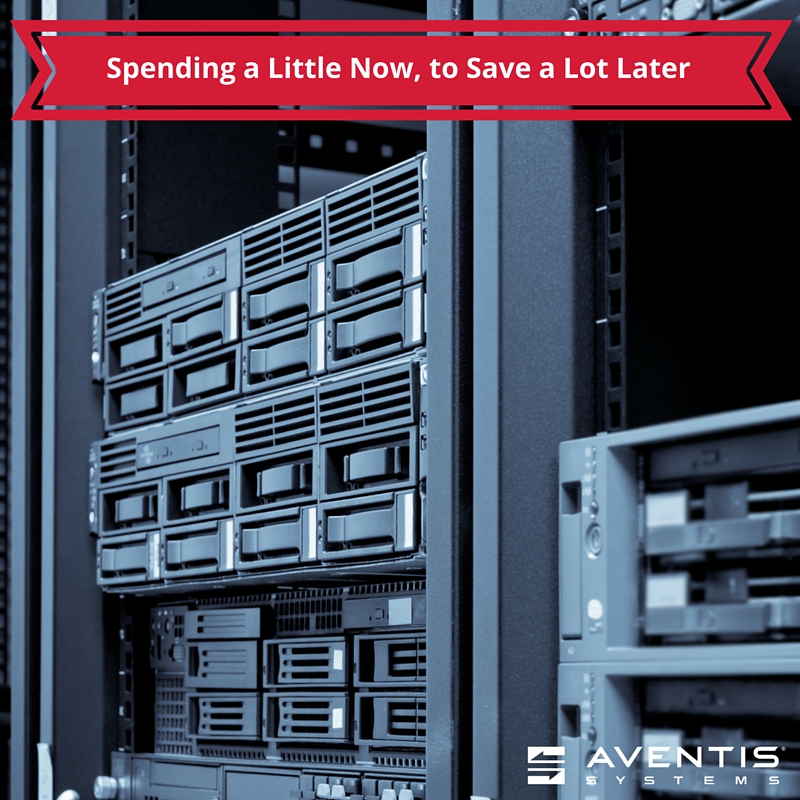Spending a Little Now, to Save a Lot Later
Three reasons why opting for the server you really want provides the most value to government IT teams
By Christopher Bloomer

With shrinking budgets and more demands placed on IT personnel in the government sector, IT staff and contractors that are shopping for new infrastructure often feel as though they must do more, with less. However, there can be drawbacks for those who are considering spec’ing a machine out lightly to make sure it is under budgetary numbers. Read on to learn why spending a little more now will likely result in decreased costs in the future.
Price
Price trumps many considerations when IT staff request solicitations for infrastructure. By having, say, 6 hard drives installed in your new server - as opposed to the maximum number of spindles - costs are reduced. The same goes for opting for a single CPU configuration, instead of dual processors, or for those who select lower amounts of installed RAM, versus higher factory configurations, for example.
While buying the bare minimum does reduce your cost now, if/when your team needs to complete upgrades to those disks, as data storage needs increase, or upgrades to system memory, as virtual environments are expanded, the costs will end up being much higher than if you bought the upgrades during your initial purchase. That is because it is less expensive for the factory or reseller to install and configure equipment as it is manufactured, as opposed to the high cost to the end user of add-on and replacement parts down the road.
For example, you can configure a popular 2U server model with 2TB SAS drives that are less than $400 each, when ordered with the original machine. What is the price after the machine has shipped, for the exact same OEM drives? Around $500!
Finally, any post-purchase upgrades to a server will need to be installed on the system. This could bring on additional costs to pay for a third party to install them or will cost time of local IT personnel.
Warranty
As if it weren’t enough that the same parts that weren’t ordered at the same time as the machine will now cost more, there is also a disparity in the warranties you will receive with add-on parts. New parts that were originally installed in a server or storage array are generally covered under the same standard warranty as the server or storage. Not so with parts purchased after the fact. Most parts your team ends up needing after the fact will typically come with a standard one year warranty. This includes practically all memory modules, drives, NICs and HBAs, cables, and the like.
By purchasing add-on items after a server has left the factory means that warranty terms will be mismatched and may end at different times. This adds paperwork and documentation requirements for COs, and the potential for IT personnel to miss warranty deadlines for newly added components. Thus, when a component fails, the only remedy available to IT staff will be for the government to purchase, without reimbursement, the exact same part.
Poor Performance and Downtime
Often, we look over requested configurations that include serious potential challenges to the system's performance, such as:
- RAID controllers without cache, which severely limits the performance of the drives.
- Memory configurations that are not optimized, which limits top memory speeds.
- Single power supply configurations, some of which include cabled supplies – not hot swap. Any malfunction in a single cabled power supply will immediately kill the machine.
Performance limitations, such as the lack of controller cache, or un-optimized memory are easy to spot, and are honorable attempts to limit the initial expenditure of government procured IT infrastructure. However, it doesn’t take long for a handicapped server to make up the few hundred dollars that was saved by not buying a 1GB of FBWC when its speeds are significantly slower than a server that does have the cache. In some environments, it could conceivably take just a few days for a server to pay for its own upgrade, when looking at the increased productivity (and morale) of those using the server.
Concerns of system down-time go hand-in-hand with initial performance limitations. Some costs may be deferred now, by not springing for performance-enhancing options. However, when IT teams eventually fund the necessary component upgrades or enhancements, their asset will still need to be brought down and the upgrade completed (usually at night or on weekends), requiring unnecessary downtime, and causing frustration to IT staff members.
Conclusion
Aventis Systems is known for our customer-centric, solution-based sales approach. While we do not believe every IT asset needs to be outfitted with the latest and greatest or be have maxed out components, there are times where IT personnel can save a lot later, by spending a little bit more now. If you would like to speak with our US-based, factory-certified presales team, to determine what’s best for your next deployment for now – and in the future – and would like competitive options presented from the best brands in the business, please contact GovtSales@AventisSystems.com. We will listen to your current needs, future concerns, and tailor your solution to your unique needs, while making sure you don’t have unplanned costs, warranty, or performance and down-time issues later.
Subscribe to Our Content
Stay updated with Aventis Systems' latest blogs, infographics and eBooks to get the IT industry's best content!